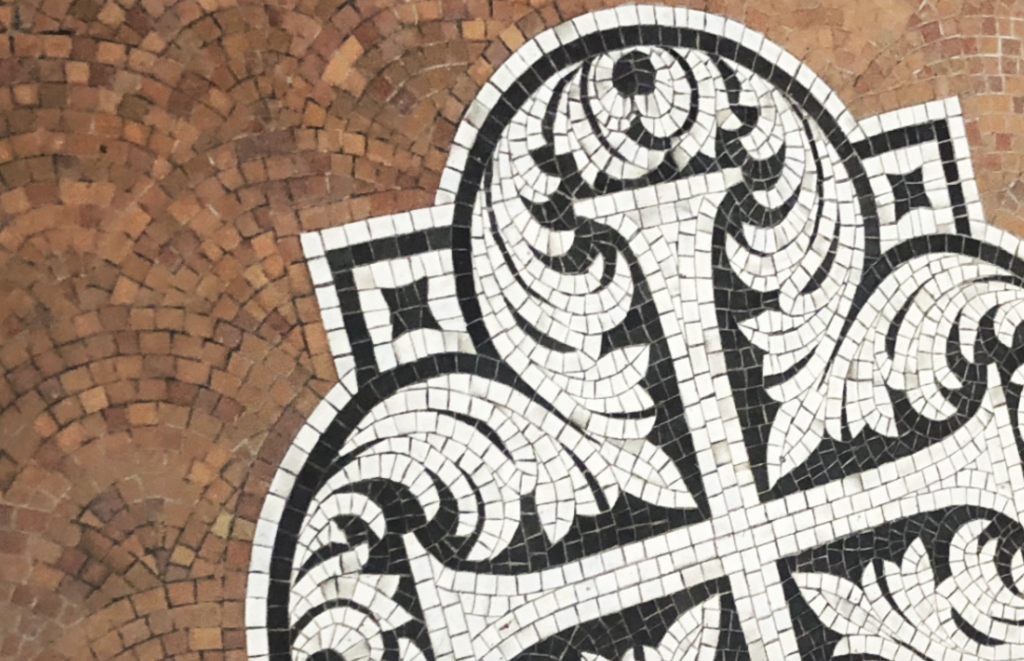MOSAIC FLOOR
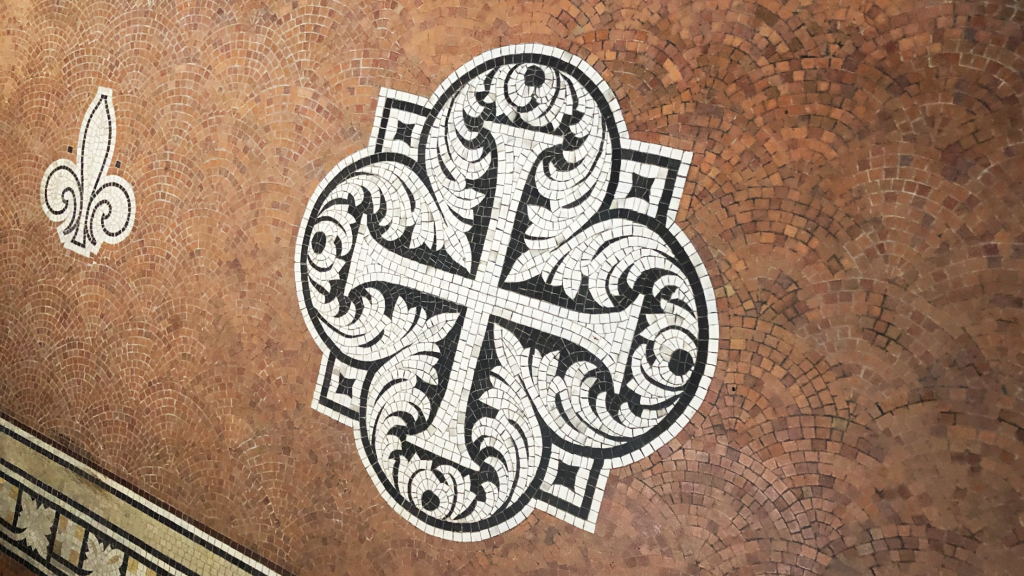
Although this part of the chapel was finished in 1860, the mosaic floor was not laid until 1919.
It was a gift of J.C Mitchell and was ‘supposedly designed’ by the daughter of Dr L.H. Marshall of Liverpool, later of McMaster University, Toronto, and later still of Rawdon College. It replaced a stone flagged floor,
The mosaic includes an Alpha (Α) and Omega (ω or Ω), the first and last letters of the Greek alphabet. This refers to a quote from the Book of Revelation in the Bible where Jesus says: “I am the Alpha and the Omega, the first and the last, the beginning and the end.”
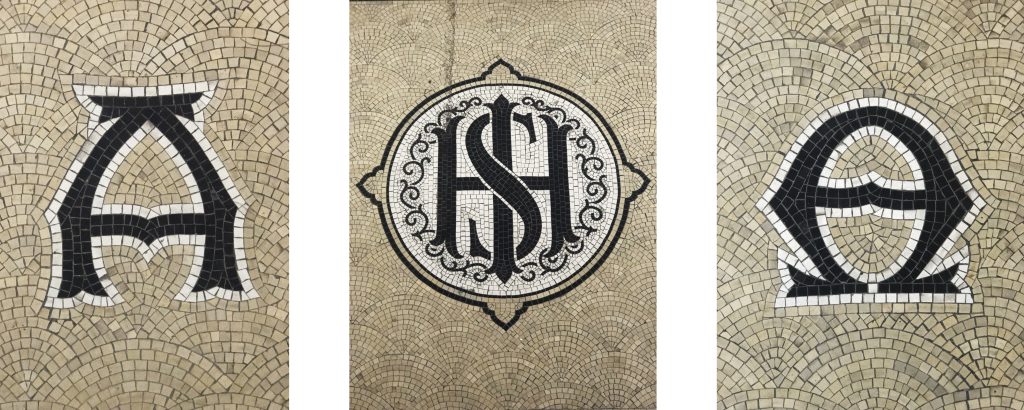
The Greek language is used as the book of Revelation is in the New Testament, which was originally written in Greek. A similar phrase is used in Islam, The Qur’an gives al-ʾAwwal (ٱلْأَوَّل), meaning “The First” and al-ʾĀkhir (ٱلْآخِر), meaning “The Last” as two of the names of God.
The idea of using mosaic for flooring also has its origins in Greece and mosaics were historically used to decorate the floors of churches.
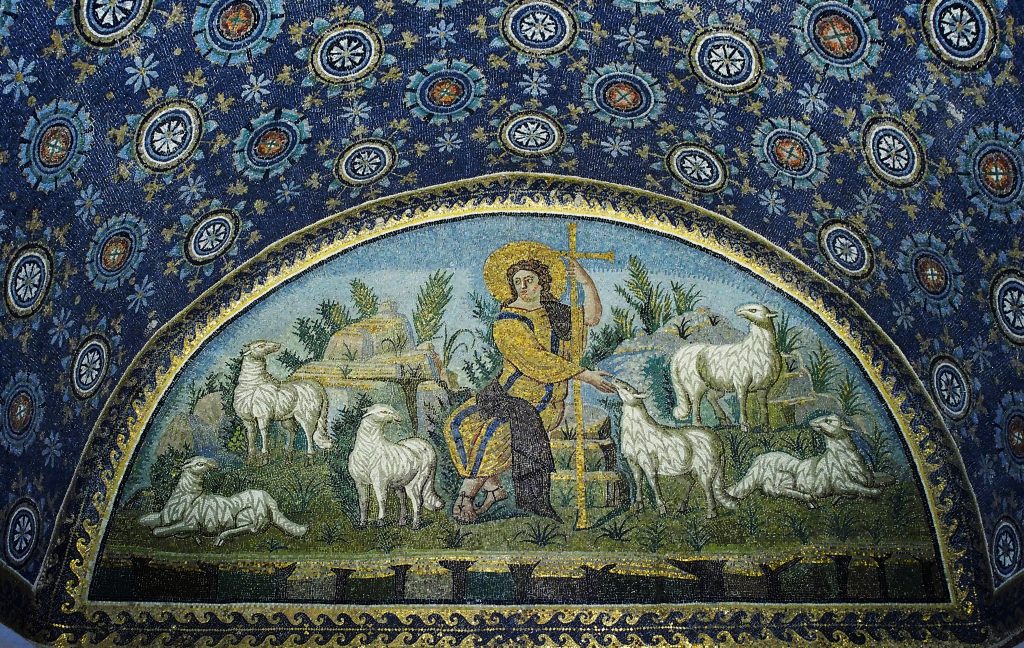
Image of The Good Shepherd mosaic in the Mausoleum of Galla Placidia in Ravena, Italy.
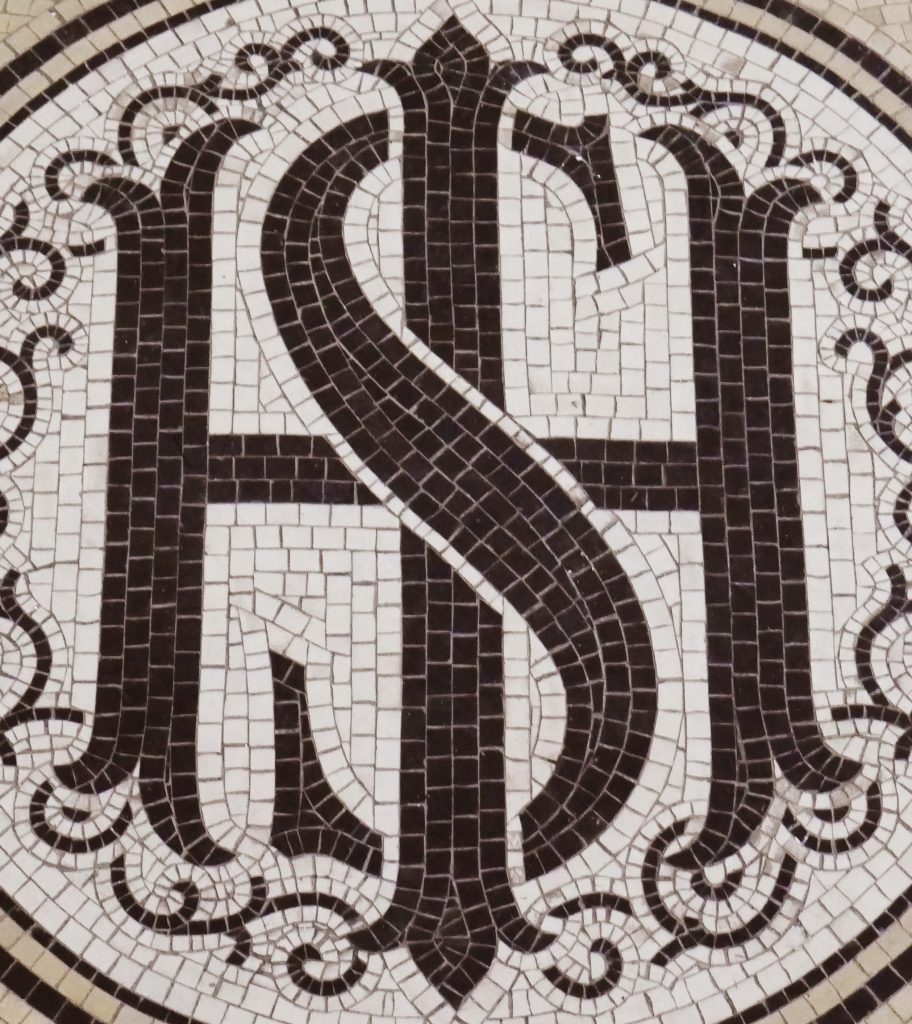
If you look closely at the mosaic bits of it are wonky. Why?
Because it was all made and laid by hand. You can see that individual squares (called tesserae) are slightly different sizes and shapes due to this fact.
